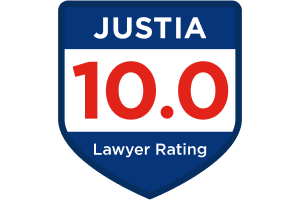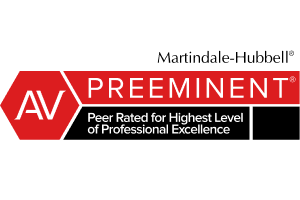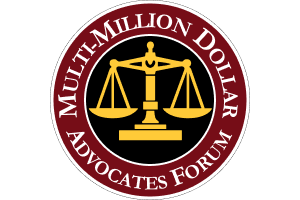Winning Cases Without Discovery
Stalwarts/Hall of Fame Committee Atlanta, Georgia – July 20, 2002
By: IRA H. LEESFIELD
Leesfield & Partners
2350 South Dixie Highway
Miami, Florida 33133
Phone: (305) 854-4900 or (800) 836-6400
Fax: (305) 854-8266
I. Introduction
Winning a case without discovery involves using information from “non-traditional” sources and building on information provided through the discovery process. Finding information usually leads to more information, and therefore, informal discovery cannot be ignored. Accordingly, if discovery has already begun, use the information already provided to find even more information. This presentation is designed to provide a few basic strategies that will improve your ability to find and use valuable information in a number of different types of cases. Hopefully, your diligence will produce quality information to use during settlement negotiations and trial.
II. The Initial Client Interview
1. Gather Information from Your Client
Winning a case requires knowledge of the underlying facts. Without determining the strengths and weaknesses of your case, you may land in very hot water. At the very least your opponent will spot your lack of preparedness and move in for the kill. Worse yet, if you settle a case, sign a release, and later discovery that your client’s loss was in fact much greater than what you represented, you’ll probably find yourself on the tail end of a bar grievance complaint. You should also be assured that before your adversary agrees to discuss settlement they will obtain all of the facts surrounding your claim. Thus, it is imperative that you do so as well.
Whether you practice commercial litigation or personal injury litigation one axiom holds true; you cannot rely on your client to either remember or candidly divulge all of the facts. Frequently, clients leave out facts because they do not think anyone will discover them. Sometimes the client does not think that certain information is important or relevant. More often than not they simply forget. It is your job to uncover these facts early, and to uncover them prior to negotiating. Failure to do so might push you on the defensive, thus jeopardizing the value of your claim.
In addition, don’t be surprised if the adjuster or defense counsel has more information than you, at least in the initial stages. Often they have access to more resources, such as insurance claims databases. If this is the case, don’t vacillate from your position, stick to your guns and simply ask for copies of the documents and time to investigate their position.
Finding information on certain areas will reveal the strengths and weaknesses of your case. The following represent some key areas to evaluate when gathering information from your client:
A. Liability & Damages
With respect to liability, arguing and apportioning fault can be quite problematic. Take for example the case of a construction worker who sustains an electrical shock while working on the job, arguably due to the fault of another sub-contractor. Who is the proper party to the suit, the general contractor, the owner, or the sub-contractor. In addition, did the plaintiff’s own negligence contribute to the accident? These issues, and the difficulty in meeting the burden of proving fault and causation must be considered as you ask your client questions.
B. Client History/Background
Is your client litigious? Does your client have a sordid record? Has your client brought the same type of claim in the past? Your client’s background can be a strength or a weakness depending on how you answer these questions. These questions must be discussed at the initial client interview, because finding out sordid details of your client’s past during settlement negotiations, or worse yet at trial, can be an unpleasant experience.
From a personal injury standpoint you must discover whether your client has pre-existing injuries and/or complaints. You cannot rely on your client either to remember their past medical history or to tell you all you need to know. Often, some client overlooks or forgets having made a complaint about a backache, a stiff knee, or some other complaint made during a routine checkup or evaluation. These prior complaints can come back to haunt you during negotiations and at trial. In contrast, these can be explained if you have a chance to talk to your client or the doctor who conducted the examination.
At some point during our lives we all experience various ailments and pains that are fleeting and never bother us again. But that is not what it looks like on a medical record. If your first exposure to the record or a pre-existing injury is during settlement talks, or worse at trial, you are in big trouble. You can protect yourself by having your client list every provider that he or she has seen in the past ten years. If the case warrants it, request these records. In addition, request the pay-out sheet from your client’s health insurer for several years prior to the injury. From this pay-out sheet you will find virtually every provider your client has visited. More often than not you will discover that your client missed some names.
III. Non-traditional Discovery
1. Pre-suit Discovery
The purpose of pre-suit discovery is three-fold. First, to educate yourself and staff as to the nature of the defendant and the facts of the injury. Secondly, to discover evidence, witnesses, technical literature, government regulations, standards and regulations. Lastly, pre-suit discovery will help to develop the theme of the litigation and the necessary proofs. For example, pre-suit discovery can often develop all of the evidence needed to prove a “failure to warn” cause of action.
A. Research All Parties
The first step in litigating a case is identifying all of the potential parties and defendants. Run general searches on the defendant using the internet and other tools. Perhaps the party’s name appears in the news or there is public information available on the party. If the case is a products liability case, then identify the designer, manufacturer and distributor of the product. Likewise, research the product in question and other products. In any event, these early research steps will give you an overview of the defendant’s operation, business, or personal life.
B. Hire Experts Early
It is also important to bring in your expert as early as possible. Experts provide a valuable resource for information because they are familiar with the type of case that your are bringing. They offer immediate evaluations of your case, pointers on the case and information on previous cases. Experts can also assist in preparing the complaint and the opposing expert’s deposition. Another good practice is to hire throwaway experts. These experts produce a wealth of information that cannot be discovered unless the expert is to appear at trial.
C. Contact Other Lawyers
Contact counsel throughout the country who have handled similar litigation. Attorneys can always help by providing models, photographs, depositions and other evidence from closed files. The ATLA exchange is a valuable tool to obtain contacts or information and has special practice groups in most areas. Local attorneys are another source of information and depositions. Have a law clerk or paralegal contact the local lawyer to obtain the file. Study the file to see the course of the litigation, who was deposed, the result, etc. The file will disclose information on the opponent’s tactics, its proclivity to abuse discovery, and facts that help your case.
D. Hire An Investigator
Hire an assertive investigator to photograph and physically visit the scene to gather vital clues. If the case involves products liability, then the investigator will gather all parts and component parts of the product. Similarly, investigators can preserve the scene of the injury and photograph the scene while giving special attention to any relevant details. For example, in a car collision case the investigator will be able to paint an accurate picture of the stop lights, road signs and road surface. Furthermore, the investigator can videotape the scene or the defective product in action. It is also a good idea to get the expert involved in this process.
E. Obtain Public Information
There is an abundance of information that is distributed to the public. Examples include sales brochures, advertisements, sales contracts, and other printed materials. These materials reveal a great deal of information about the defendant and its product or services.
F. Use the Internet
The internet is a valuable tool in gathering useful information that is hard to find. Locating people, their assets, and other confidential information is facilitated by the internet. Public and private databases offer information on individuals, agencies, expert witnesses and licensed individuals. Likewise, using a general search engine might reveal the contents of an online discussion group, an article or other documents. Conducting searches and inquiries on private databases will cost a fee, but regular search engines are free.
IV. Products Liability Actions
1. Special Considerations
Products liability actions involve a somewhat intense fact-gathering process. There can be a number of different parts and components necessary for the case. Furthermore, there may be an abundance of paperwork and other documents in existence that are relevant to your case. Here are few tips on gathering useful information:
2. Gather purchase contracts, warranties, labels, owner’s manuals, periodic maintenance records, product registration records.
3. Conduct a patent search to discover any recommended safety devises and warning features which may be ignored industry-wide, but recommended before manufacture of the product.
4. Acquire your own version or facsimile of the product at issue. Securing and safeguarding the original product will allow you to test the product and use it during testimony. Furthermore, obtaining the product will prevent the unfortunate circumstances of when the defective product is not available. Thus, you will avoid the “plans and prints” approach to design defect cases. Finally, having the product will allow you and your expert to know the product inside and out.
5. Research manufacturing and maintenance standards of trade associations and industries, and internal standards of a particular manufacturer. Also obtain ANSI standards for warnings and the industry’s “bible” (source of all industry standards and activities).
6. Research state and federal statutes or government regulations providing standards for industry compliance. They often provide standards as to the manufacture, inspection, marketing and warning related to the product. Examples of relevant federal acts:
- Hazardous Substance Labeling Act.
- Flammable Fabrics Act.
- Federal Hazardous Substance Act.
- Occupational Safety and Health Act.
- Consumer Product Safety Act.
- Federal Aviation Act.
- National Traffic and Motor Vehicle Safety Act.
- Poison Packaging Act.
- Refrigerator Safety Act.
- Federal Boat and Safety Act.
- Food, Drug, & Cosmetic Act.
- Insecticide, Fungicide and Rodenticide Act.
- In General: Code of Federal Regulations.
7. Review all general source materials:
- ATLA Products Liability Exchange
- Federal Consumer Product Safety Service (Bender)
- Product Safety and Liability Reporter (BNA)
- Products Liability Report (CCH)
- “Thompson Register”
V. Medical Malpractice Cases
1. Introduction
Medical malpractice cases offer many opportunities to gather information from non-traditional discovery sources. Counsel must investigate the defendant’s expert witness and the doctor performing the initial medical evaluation. More than likely, the doctor has testified in other cases and has a traceable history on his opinion. Additionally, do a background check to attack the credibility of the witnesses. The following are some examples of the resources available in the medical malpractice case:
A. The ATLA Exchange
Consult the ATLA Exchange for background research on the doctor. The Exchange contains databases of legal and technical information on a host of regularly updated topics such as medical malpractice, expert witness referrals, brief indexes, and deposition banks. Visit ATLA online at www.atla.org or call (800) 424-2725. Local deposition banks such as the Academy of Florida Trial Lawyers and the Dade County Trial Lawyers Association may also yield useful depositions.
B. Other Attorneys
Other attorneys, locally or nationally, are a good source of deposition and trial testimony. One such resource is the Attorneys Information Exchange Group (AIEG). This is one of ATLA’s litigation groups consisting of trial attorneys in various fields of law who have marshaled materials and made them available to members. Litigation group membership is open to all ATLA members. Furthermore, if the witness does a lot of testifying in a specific location, there is the chance that many lawyers know of that expert. Moreover, many law firms maintain their own internal deposition data banks. Make direct contact with the lawyers from these firms to obtain prior deposition testimony. Similarly, the court reporters where the expert lives and works can furnish you with a copy of the expert’s deposition.
C. The Internet
As in other areas, the internet is a worthwhile tool. Perhaps the internet’s greatest asset is that it is accessible 24 hours a day. Additionally, the information available on the internet grows exponentially every month. Besides ATLA, other private companies gather depositions on doctors. Still more websites offer hyperlinks to other sites that provide useful information. In fact, our firm’s website, www.leesfield.com, offers an abundance of information and research links.
D. Background Checks
A physician’s credibility is highly important and should be considered as an essential element of the trial. The goal of investigation is to uncover negative information about the doctor that would show jurors why they should not trust his testimony. Prior to trial, you should attempt to obtain as much information about the physician as possible.
Obtain the CV on the doctor and do independent research of the organizations he has listed. Make sure he is actually a member of the organizations he has listed and find information about each organization. If possible, get the doctor’s application to the organization. Sometimes, these associations and groups are not real medical associations, but are actually associations for IME doctors that train individuals to testify as IME doctors. One such group is the American Board of Independent Medical Examiners (ABIME).
Check the physician’s license and credentials. If the doctor is licensed, obtain a copy of the license and application for state licensing. Websites for the American Medical Association and the Department of Professional Responsibility offer information on the doctors training, background, and perhaps information outside the scope of the CV. Furthermore, investigate the medical expert’s school affiliations from medical school, internship, residency, and faculty positions, the Educational Commission for Foreign Medical Graduates, and all other governmental and quasi-governmental organizations. Also, find out if the expert has ever written papers or given seminars or presentations to other defense lawyers, claims adjusters, or insurance personnel.
Perform either a LEXIS or WESTLAW search, particularly in the federal courts and the state civil trial databases of the physician’s home state. A name search will identify your expert in each instance where his testimony was discussed in later appellate opinions. Thoroughly document and understand the litigation, educational history, and background of the doctor.
VI. Offensive Collateral Estoppel
1. Introduction
Another way of winning your case with information outside of traditional discovery is by finding and using legal tools. One of these tools is offensive collateral estoppel. Collateral estoppel is used when litigating against a defendant who has previously had a judgment entered against it on the basis of the same issues involved in the present case. The theory provides that once a court has decided an issue or law necessary to its judgment, that decision may preclude relitigation of the same issue in different cause of action involving one of the parties to the prior case.[1] Therefore, collateral estoppel can be the predicate of a Motion for Partial Summary Judgment on the issue of a defendant’s liability. It is an effective legal weapon that can shorten litigation by months, and sometimes, years.
This doctrine can even be used to preclude relitigation of matters decided in Consent Judgments.[2] Moreover, where punitive damages are awarded in an earlier case, the fact of such an award constitutes an affirmance of the standard punitive damage allegation that defendant’s conduct in designing, testing, manufacturing, distributing and/or selling the ATV was in wanton disregard of the health, safety, and welfare of foreseeable users. The end result of using collateral estoppel is that the only remaining issue at trial will be the amount of damages to which a plaintiff is entitled. Therefore, do the legal research to find a case that can be used against the defendant. The following are a few case examples of how the doctrine functions:
A. Parklane Hosiery Co. v. Shore
The landmark case governing offensive use of collateral estoppel is Parklane Hosiery Co. v. Shore.[3] The following elements are necessary for a previous judgment to be used as the predicate for a motion for Summary Judgment on the issue of the defendant’s liability:
1. The issue at stake in the instant litigation must be identical to the one involved in the prior litigation;
2. The issue must have actually been litigated in the prior suit;
3. The determination of the issue in the prior litigation must have been a critical and necessary part of the judgment in that action; and
4. The party against whom the earlier decision is asserted must have had a full and fair opportunity to litigate the issue.
B. Oberg v. Honda
In Oberg v. Honda,[4] judgment was entered against the defendant. Looking at this case gives an excellent example of some of the findings of fact that may not be able to be relitigated in a subsequent case where identical issues are raised:
1. That the Honda ATV is inherently dangerous in having an unreasonably high rearward center of gravity and an unreasonably powerful engine
2. That Honda failed to incorporate safety mechanisms into the design of its ATV
3. That Honda failed to adequately warn users of the ATV’s inherently dangerous design
4. Honda was negligent in designing, manufacturing, and distributing the Honda ATV
5. Honda was negligent in failing to provide adequate warnings of instability
6. Honda was negligent in failing to adequately test the ATV
C. Caveat for Offensive Collateral Estoppel
Not all courts permit the use of collateral estoppel offensively. Florida State Courts, for instance do not permit use of this legal device. Federal courts, on the other hand, even those sitting in Florida do permit the its offensive use. Furthermore, even in those state and federal courts which permit collateral estoppel, its use may still be proscribed if the judgment which is sought to be used offensively is based on the substantive law of a jurisdiction where such offensive use is not allowed.[5] In permitting the offensive use of collateral estoppel, the Parklane court held it to be an essential consideration that the plaintiffs in the subsequent lawsuit had not then, nor would ever have, the ability to join the previous action.[6]
VII. Conclusion
As demonstrated, non-traditional discovery methods offer as many advantages as traditional discovery methods when for obtaining information. There is an abundance of information available for the diligent lawyer that is waiting to be tapped. Do not be afraid to get on the phone and contact other lawyers. More often than not, they will assist you and offer guidance. Conversely, try your best to assist other counsel.
[1] Allen v. McCurry, 449 U.S. 90 (1980).
[2] Lops v. Lops, 140 F.3d 927, 958-959 (11th Cir. 1998); Franco v. Selective Insurance Co., 184 F.3d 4, 9 (1st Cir. 1999).
[3] 439 U.S. 322 (1979).
[4] 814 P.2d 517, Case No. A8709-05887 (Or. App. 1991).
[5] See Branca by Branca v. Security Benefit Life Ins. Co., 773 F.2d 1158 (11th Cir. 1984).
[6] Parklane Hosiery Co. v. Shore. 439 U.S. 322, 331-332.







